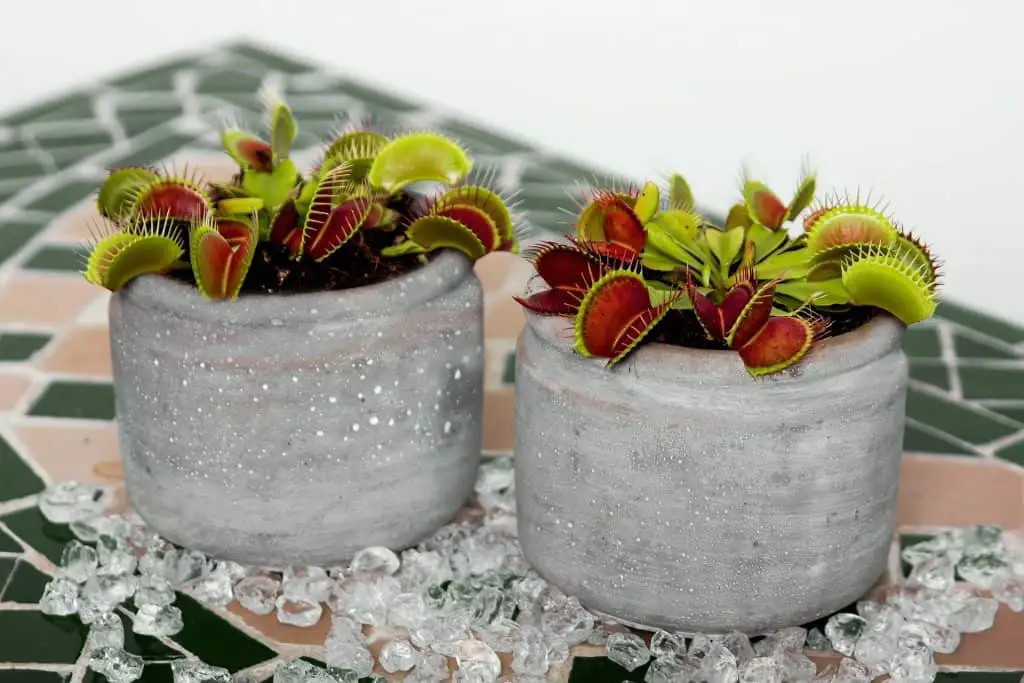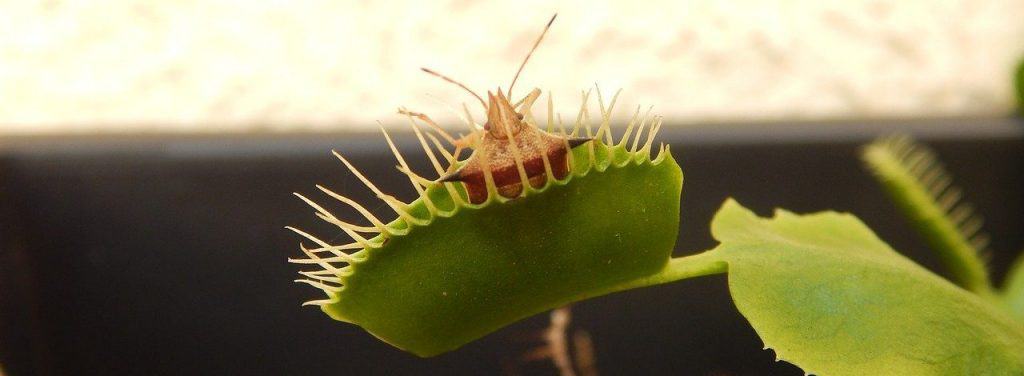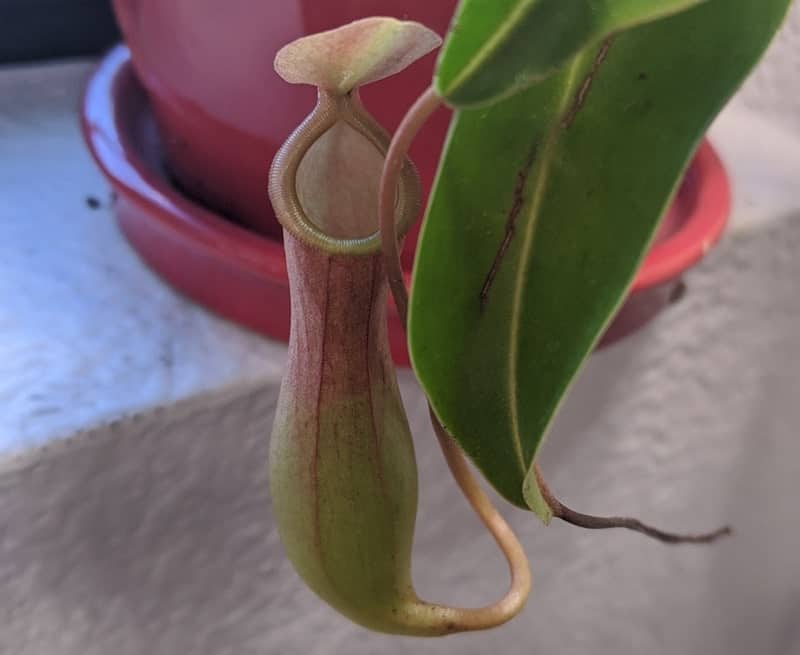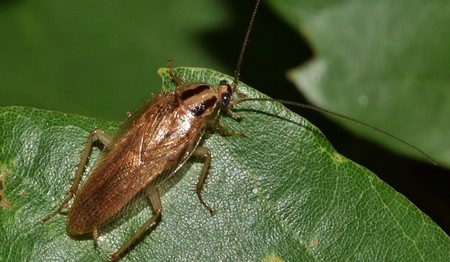Venus flytraps can make fantastic houseplants; they capture annoying bugs inside your home. Since cockroaches are one of the most hated pests, many wonders of Venus flytrap can offer a solution and capture roaches.
Venus flytraps can consume small roaches that fit within the plant’s traps. The plant can reduce the bug infestations within certain limitations. However, other carnivorous plants with pitcher-like traps are more effective.
Roaches are a suitable meal for Venus flytraps. But, there are many other options to feed Venus flytraps.
The next sections will explain the effectiveness of Venus flytraps as a bug controller and expand on more suitable alternatives.
Can Venus Flytraps Eat Cockroaches?
Venus flytraps developed bug trapping mechanisms to supplement their diet. They capture insects to extract key nutrients and boost their development.
Venus flytraps consume various insects and arachnids, such as ants, gnats, crickets, worms, slugs, and flies. They are not specifically designed to trap any type of insect.

Venus flytraps can also consume roaches. The plant can capture its own prey or be fed manually. In the next sections, you will learn about each case.
Can Venus Flytraps Trap Cockroaches Naturally?
In the wild or in a home setting, Venus flytraps attempt to capture prey whenever they can. Venus flytraps produce sweet nectar in the interior parts of their lobes to attract potential victims.
The nectar draws a wide variety of insects. Once an insect is walking inside the traps, it triggers thin filaments in the leaves and prompts the plant to close.
Venus flytraps can capture roaches by using their standard trapping mechanisms. The traps of a mature Venus flytrap extends an average of 1-inch in length. Within that length, Venus flytrap can consume small roaches.
Cockroaches are not the most common meal for Venus flytrap, but a plausible one, especially in an indoor setting. In the outdoors, Venus flytrap consumes a lot of ants and other crawling insects.
Roaches are one of the oldest plagues. They consume a variety of organic matter and are common pests in some urban areas. The sweet nectar from Venus flytraps can attract roaches and other insects wandering nearby.
How Effective Are Venus Flytraps on Eliminating Roaches?
Carnivorous plants are unique creatures. They can consume animals! But how effective are they? Can Venus flytraps eliminate a bug infestation, such as roaches?
Venus flytraps can consume cockroaches, but their effectiveness as a bug controller is limited. A Venus flytrap has less than a dozen active traps. They can only consume a handful of bugs at a time, and their digestive cycle takes several weeks.
Due to the size of Venus flytraps, the plant can only capture small bugs. Mature Venus flytraps are big enough to capture cockroaches. Still, they are limited. The size of cockroaches varies from half an inch to several inches. 1-inch long Venus flytrap leaves can capture roaches in the lower end of the spectrum. Venus flytrap capture bugs that can fit completely inside their traps.
The number of cockroaches Venus flytraps can consume is limited. Venus flytraps have a limited number of traps (between 6-10). Each trap can capture one bug at a time. After trapping the bug, the plant starts the digestion process, which can take a long time.
Venus flytraps take a few days to multiple weeks digesting a single bug. For example, smaller insects, such as ants or gnats, can take 5-7 days. Larger bugs take a lot longer to digest. Crickets or cockroaches can take 2-3 weeks to digest. Once the plant finishes the digestion process, the trap reopens, and it’s ready for the next victim.
Venus flytraps have some limitations on how many bugs they can capture to act as a bug controller. This challenge can be overcome by owning several plants or by employing other carnivorous plants. The last section of the article describes some alternatives.
Can Roaches Be Used as a Food for Venus Flytraps?
Venus flytraps thrive when they have access to feed. Consuming bugs boosts their diet and encourages healthy growth. As a Venus flytrap owner, you are encouraged to place your plant where it will have plenty of access to feed (a garden, for example) or feed it manually.
Venus flytraps do not require bugs to survive. They can live happily without eating insects by producing their own substance through photosynthesis. However, feeding Venus flytrap has many positive effects.
Roaches are a fine food option for Venus flytraps. They can be used as dead or live feed. The bug must be small enough to fit within the closed trap.
Before employing a cockroach to feed your Venus flytrap, make sure to check a few things.
- The bug must be small enough to fit within the closed leaf. A good rule of thumb is to pick bugs that are 1/3 of the size of the trap or smaller.
- If the cockroach is dead, examine it for mold or bacteria. Make sure the bug is clean.
- Check the traps of your plant. If the Venus flytrap is still digesting a meal, there is no need to feed it again.
There are a few differences between feeding dead bugs and live bugs to Venus flytraps. Personally, it is easier to employ live bugs if you do not have difficulties handling a live insect. Since the feeding process can be tricky, I wrote a detailed guide on the feeding process. You can read it by following this link. It gives you the details and tips on how to feed dead and live bugs to Venus flytraps.

Besides roaches, Venus flytraps can consume many different types of bugs.
The easiest way to feed a Venus fly trap is to grow the plant outside in a garden with access to live feed. Venus fly traps are effective predators; they can capture bugs on their own.
When I have grown Venus flytrap indoors, I feed them dead bugs I buy in the pet store. Dried-freeze mealworms, bloodworms, or crickets are all suitable options. A small container of dried-freeze bugs from the store can last you for months or even years.
Venus flytraps do not need to be fed constantly. One meal a month is more than sufficient. Owners can notice bug differences between plants that consume bugs and plants that don’t.
What Carnivorous Plants Eat Cockroaches?
Carnivorous plants are unique. It is surreal to encounter a plant that can consume meat. Carnivorous plants can capture and consume insects, arachnids, and even small mice, birds, or frogs. But, some species of carnivorous plants are more effective as bug controllers.
Almost any carnivorous plant can consume cockroaches as long as the bug is weak enough to fall into their trap. Venus flytraps can consume roaches, but they are limited due to their size and number of traps. Other carnivorous plants, such as Pitcher plants, are more effective as bug controllers.
Pitcher plants characterize by having pitcher-like structures to capture insects. Thanks to their pitfall trapping mechanism, bugs fall inside their pitcher and are unable to escape. Then, digestive fluids inside the trap break up the bug and digest it slowly.

Pitcher plants are not limited on how many bugs they can capture at a specific time. Multiple bugs can fall inside the pitcher. And each plant has multiple pitchers waiting for the next victim.
It is unlikely that a single carnivorous plant can eradicate a pest in a home. In most cases, you will have to call an exterminator to eliminate pests. Still, carnivorous plants can assist in reducing the bug population. Which is an amazing feature, not many plants can provide!
Depending on the type of bug you want to eliminate, some carnivorous plants are better than others. Pitcher plants can be effective at capturing roaches. Mexican butterworts and Sundews are suitable bug controllers for gnats and mosquitos.
Suppose you are interested in owning a carnivorous plant. Start by researching which type is the best for you. Here is a list of some popular species for inspiration. Also, it is critical to learn how to care for carnivorous plants. Carnivorous plants are not hard to care for as long as you follow the instructions. Here is a guide with all you need to know when growing carnivorous plants.


